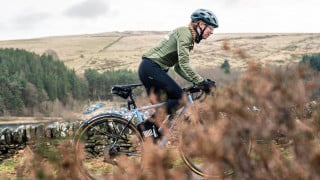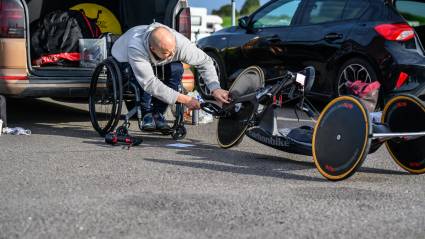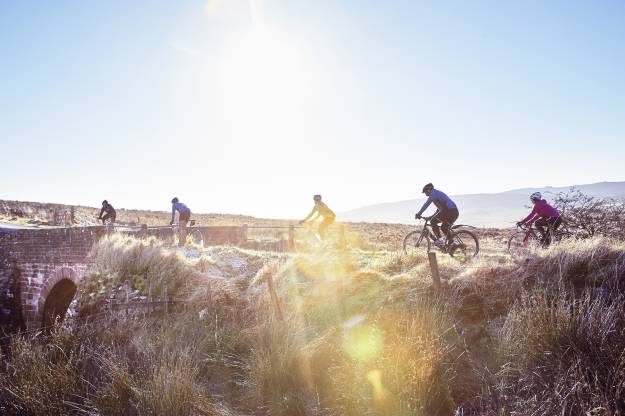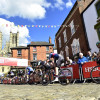Knowledge Level: Beginner
Cycling offers so much more than just a workout; it’s an adventure, a form of therapy, and for some, even a lifestyle.
Whether you are a casual commuter or training for your next big race, it can feel like you’re spending as much time tracking numbers as you are enjoying the ride. But used wisely, those numbers can transform your training, help you avoid injury, and even connect you to a broader community. The trick? Starting to find ways to balance data with the joy of the journey in a way that works for you.
Here’s how you can make the most of your metrics, while ensuring the numbers fit you—not the other way around.
Enhanced training and performance
When it comes to improving your cycling, metrics are the building blocks of a solid training plan and can be used as a baseline to monitor improvement from. Want to build more strength? Focus on power.
Need to improve endurance? Keep an eye on heart rate. Tracking these numbers allows you to see where you’re progressing and where there’s room for improvement.
Injury prevention and recovery
Overtraining is one of the fastest ways to burn out or get injured, it can happen to anyone from any discipline at any time. By keeping track of heart rate variability, recovery times, and training load, you can make adjustments before you push yourself too far. For instance, if your resting heart rate is higher than normal, it could be a sign that you need more recovery time.
Heart rate variability is an excellent indicator of your body’s readiness to train, while tools like TrainingPeaks can alert you when it’s time to pull back or dial it up. Not only do these metrics keep you in tune with your body, but they also help you plan your recovery, whether that’s stretching, foam rolling, or making sure you have plenty of frozen peas ready for any sore spots!
Key considerations:
- Track heart rate variability to gauge when you need rest.
- Monitor recovery times to avoid overtraining.
This article from Training Peaks can help you learn how to optimise rest days for improved performance and recovery in endurance training, including the benefits of active recovery and proper nutrition.
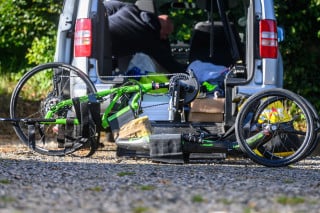
Improved bike maintenance and safety
Keeping a record of how far you and your bike have ridden can help you schedule timely bike maintenance, making sure your chain stays smooth, your tyres are road-ready, and that annoying clicking sound doesn’t turn into a costly repair. Consider keeping a log to know exactly when it’s time for a service, which will help keep you rolling smoothly.
Maintenance tips:
- Schedule bike check-ups after a certain mileage to stay safe.
- Use mileage tracking apps to set reminders for when it’s time to service your bike.
- We have an entire section on our Insight Zone dedicated to bike maintenance.
Community and social engagement
Cycling might feel like a solo activity, however it has an incredibly diverse and vibrant community – both online and offline. Platforms like Strava and Zwift are more than just tools for tracking progress; they’re spaces where you can share achievements, join challenges, and connect with fellow riders across the globe. But the sense of community doesn’t end online. Engaging with your local cycling scene can be just as rewarding.
Joining a British Cycling-affiliated club or group will connect you with cyclists in your area through group rides, training sessions, and social events – whatever your discipline. Local bike shops are great hubs for local communities, offering not only gear and repairs but advice, routes, and even regular ride meet-ups.
Ways to engage:
- Join a Strava Challenge: Stay motivated by participating in Strava challenges and see how you compare with others.
- Support Your Local Bike Shop: Drop by for repairs, advice, or to join community rides that many shops organise regularly.
- Share your achievements: Celebrate your milestones and personal bests by posting them online or discussing them with fellow cyclists at club rides or meet-ups.

Beyond the numbers
We all know that speed and distance are great ways to measure a ride, but focusing on the experience, the scenery, or even how the ride made you feel can be just as rewarding. Here are some creative ways to think about your ride that don’t require staring at your stats.
Perceived effort
Instead of being tied to the numbers, why not pay attention to how the ride actually felt? Perceived effort is a personal gauge of how hard you worked. Did you feel strong and steady, or was it more of a grind? This is something we all feel, and it’s a great way to track your progress without needing a device.
- Check in with yourself: After your ride, take a moment to rate how tough it was on a scale of 1 to 10. Was it easier or harder than your last ride?
- Use Strava’s perceived exertion tool to track your efforts over time without getting caught up in the nitty-gritty numbers.
Scenic value and mindfulness
Some of the best rides are measured by what you experience along the way. Whether you're navigating quiet country roads, discovering hidden trails in the forest, or cruising through city streets, it’s the surroundings that make each ride truly memorable. The sharp chill of the morning air, a breathtaking view, or an unexpected moment of solitude—these are the things that leave a lasting impression.
So, what will you look out for on your next ride?
- Snap a few photos: Instead of tracking distance, why not take a few pictures along the way? It’s a great reminder of the beauty and excitement of your ride.
- Savor the ride: Focus on what you see, hear, and feel while cycling—whether it’s the wind on your face or the landscape around you. Try being present and enjoy the experience.
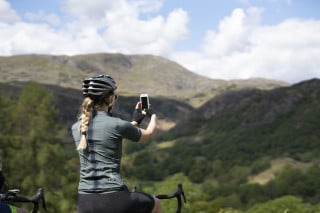
Exploration and adventure
Cycling has the power to turn every ride into an opportunity for discovery. Setting goals like visiting all the parks in your area or discovering hidden landmarks or simply visiting a new cafe, can add a whole element to your rides.
Cycling can also become part of your daily routine - whether commuting, running errands, or doing the school run - turning everyday trips into mini-adventures. And when planning your holidays, consider choosing destinations that offer bike hire and suggested cycling routes to combine travel with your passion for riding.
Explore more:
- There are thousands of recommended cycling routes in OS Maps, which helps you navigate with ease. Look out for the 80 new British Cycling approved routes across the West Midlands or have a go at plotting your own. Discover how to use OS Maps for cycling - and if you're a British Cycling member you can save with a subscription. Just visit your Member Rewards Hub.
- Plus our Let’s Ride website has over 1,000 approved routes across the UK. Our qualified route planners have created detailed maps with a description and rating so you can choose the right route for you.
At its core, cycling is about the ride, not just the numbers. While metrics can certainly enhance your training, prevent injuries, and give you tangible goals to strive for, they’re only part of the bigger picture. Remember that every ride counts, whether it’s tracked in watts or in memories.
By finding a balance that works for you between performance-driven metrics and the sheer enjoyment of the ride, you’ll unlock the true essence of cycling—adventure, fitness, community, and above all, fun. After all, the most meaningful rides aren’t just about hitting targets, but about the joy of the journey itself.

